Ultimate Guide to Cooking on a Weber Q BBQ
If you have just assembled your Weber Q for the first time and have no idea how to begin using it, I will show you how easy it is to cook on a Weber Q BBQ.
By the time you have finished reading my ultimate guide, you will be cooking beautiful, juicy, and delicious food every time.
Such as roast pork with crackling to a juicy leg of lamb or even baking banana and walnut bread, you’ll never run out of ideas.
There is nothing better than getting the family together on a Sunday for a beer, wine, and a perfectly cooked roast or BBQ.
If you have a passion for cooking as I do, then you are going to want to read this guide to the end.
Trust me, your friends and family will thank you for it.
A Brief History Of The Weber Kettle
The Weber age began back in 1893 when George Stephen Sr, a part-owner of a sheet metal store, wanted to improve upon a brazier he had been cooking on at home.
Manufactured in his shop, Stephen built the first-ever grill by cutting a buoy in half, Naming it “George’s Barbecue Kettle,” It became a hit and has continued to evolve over many decades.
The first Weber Q titled (Q) rolled off the factory floor back in 2004 and has become an Australian icon ever since.
Also popular in parts of Europe and the United States for its portability and convenience.
The Weber Q is so versatile. It can be transported and used on small apartment balconies, camping, and sporting venues.
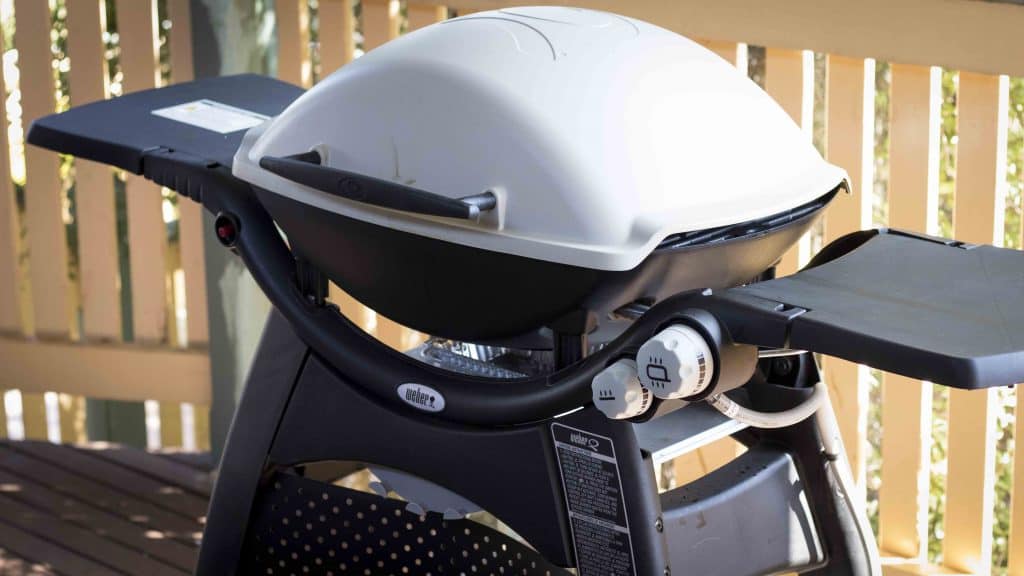
What is the best Weber Q to buy?
There are three sizes available in the Weber Q Range. And before deciding which one is right for you, please check out the table below.
| Weber Q Baby(1000) (1200) | Weber Q Medium(2000) (2200 | Weber Q Family(3000) (3200) | |
|---|---|---|---|
| Cooking Area: | 1200cm2 | 1800cm2 | 2400cm2 |
| Can Cook For Up To: | 2-4 people | 2-6 people | 10+ people |
| Best Suited For: | Picnics, Camping, Holiday Parks | Picnics, Camping, Holiday Parks | Home, Large Gatherings |
| Is It Portable: | Yes. Portable Cart / Patio Cart not supplied | Yes. Portable Cart / Patio Cart not supplied | No / Patio Cart Is Supplied |
| Gas Type: | LPG Only | LPG / Natural Gas Optional | LPG / Natural Gas Optional |
| Lid Thermometer: | 1000 Series: No 1200 Series: Yes | 2000 Series: No 2200 Series: Yes | 3100 Series: No 3200 Series: Yes |
| Roasting hood height: | 1000 Series: 13cm 1200 Series: 15cm | 2000 Series: 14cm 2200 Series: 17cm | 3000 Series: 18cm 2300 Series: 20cm |
| Weight: | 10.75kg | 16kg | 34kg |
| Where To Buy: | Amazon | Amazon | Weber Australia |
When I purchased mine, I asked myself several questions.
- What am I going to be cooking?
- Will it be large enough to cook roast pork, lamb, etc.? And roast vegetables at the same time?
- Will it fit enough food to accommodate a large number of people?
- Can I take it camping?
- How long does an 8.5kg LPG (propane) bottle last?
- How easy is it to clean?
Yes, I know I asked myself a lot of questions. But you have to. It is an expensive purchase. But I can tell you it is worth every penny.
I settled on the Family series, which is the largest of the three models, but that was because I have three kids that are not getting any smaller.
I knew I had to future proof my Weber Q.
With the family series, I can easily fit a 3kg roast pork, roast potatoes, pumpkin, and carrot all at the same time to feed a family of five.
That does, however, make it more difficult for transportation, as you need to have a Weber Q patio cart due to its size.
But I have taken it camping because the side tables are foldable, making it easy enough to transport on your trailer.
If you are planning to cook for a smaller number of people, then the Medium series or Baby Q series is perfectly fine also.
Many accessories are also must-haves depending on the series you buy, bringing the cost of your new Weber Q up substantially.
There are two different models, one with a temperature gauge on the hood, and the other does not. It is important to ask yourself if you’re roasting meat. How are you going to know the temperature of your Weber?
The Weber Q cooks just like a convection oven when roasting or cooking pizza but a hell of a lot better.
But like any oven, you can’t just keep opening the lid, or the temperature will plummet and fast, adding more cook time to your food.
Whichever size you do decide to buy, you will always have perfect food every time you are cooking on your Weber Q BBQ correctly.
What is indirect cooking on a Weber Q?
To make sure your meat is cooked perfectly every time, it is crucial to understand how a Weber Q operates.
Cooking meat for less than 25 minutes on a traditional barbecue that is over a flame is direct heat.
This is the BBQ method and is used for cooking steaks, kebabs, sausages, and chops etc.
Indirect cooking is when a device such as a convection tray and trivet is placed under the meat blocking the flame, pushing the heat around or to one side of the meat.
You are essentially creating convection heat very much like roasting or baking in an oven.
Any meat that takes longer than 25 minutes to cook should always be cooked over indirect heat.
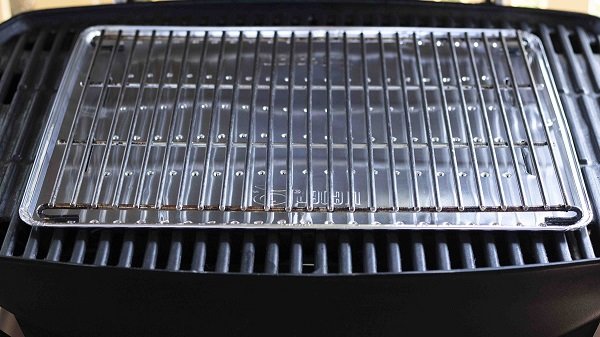
Consider this the best method for roasting chicken, lamb, pork, turkey, and ribs.
Underneath the grill, there are two gas bars for both direct and indirect cooking.
The large outer bar has been designed for indirect heat, while the inner bar is for direct heat, much like a standard Weber Kettle.
But instead of using coal or heat beads, the Weber Q uses LPG (propane.)
Your meat will not know the difference; trust me.
Can you cook on a Weber Q with the lid open?
Weber has been in the game for well over 50 years, making some pretty remarkable cooking systems, and they certainly know what they are doing. And the Weber Q is no different.
When cooking on a Weber Q BBQ, it is a must to keep the lid down for many reasons.
By keeping the lid closed, you will always guarantee that unique smokey barbecued flavour in anything you cook.
Which you cannot get on any other barbecue system.
And at the same time using less gas and saving you money, making the Weber Q work more efficiently and at the same time keeping your BBQ area cleaner.
Because of the way the gas system in a Weber Q was designed, it will use less than half of what a traditional four-burner gas barbecue will use.
In my experience, I have found by cooking with the lid closed I can make at least a dozen roasts and pizzas easily with an 8.5kg LPG (propane) gas bottle.
That means I am cooking for over 24 hrs straight without running out of gas.
By cooking with the lid open, you are letting out all of the beautiful, delicious flavours and aromas and that make Weber so popular.
When cooking roast pork, lamb or chicken, you are also not helping yourself. Adding more cook time to your meat, as the Weber Q is effectively a convection oven.
You might often hear that you need to have a high gas output to sear a delicious steak on a traditional barbecue. But this isn’t true.
In most cases, any gas barbecue that needs a high gas output to sear a steak needs to compensate for a poorly designed and inefficient barbecue system.
By cooking with the lid down, your Weber Q will produce enough heat to sear a steak. Your food will cook quickly and more efficiently, and at the same time saving you time cleaning and more importantly saving you money.
Cooking with the lid closed will also help to keep your barbecue area free from any fats or juices that spit out from the food or grill. That means less work cleaning the verandah or deck.
Can you use a Weber Q in a total fire ban?
All Australian states have similar laws regarding what you can and can’t use during a total fire ban with some exceptions.
Barbecues that need solid fuel to cook are banned. This includes:
Wood, charcoal and heat beads.
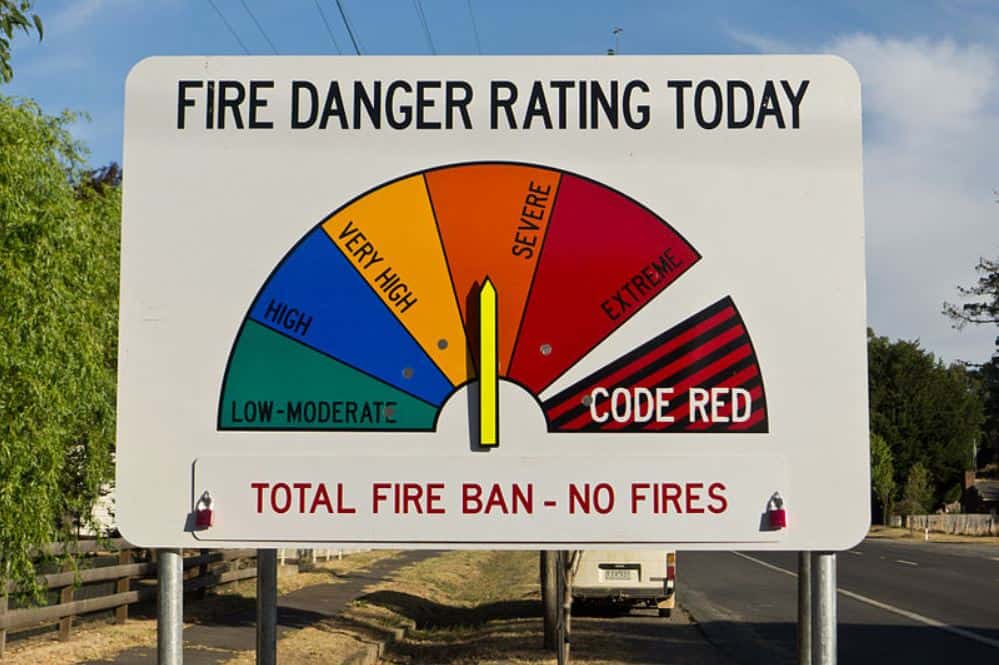
Victoria CFA
The laws in Victoria are pretty clear cut.
No solid fuel, liquid barbecues or ovens are to be used during a total fire ban in the open air. That includes a Weber Kettle.
- Any gas (LPG) or electric barbecues or webers are fine to use on a total fire ban IF:
- All combustible material is removed from the BBQ area within a distance of 3 metres.
- A hose connected to a water source is within arms reach, or a minimum 10-litre water container is present.
- An adult must be present at all times and prepared and have the capacity to extinguish the fire if required.
Check out the link below to get a full breakdown of Victorian laws.
Source: CFA Victoria
NSW Rural Fire Service
Laws in NSW are slightly stricter regarding the use of barbecues and webers.
All solid fuel barbecues and webers are not allowed to be in use in the state of NSW during a total fire ban.
The use of gas (LPG) and Electric bbq’s is okay with some exceptions. Cooking on a Weber Q BBQ is also fine.
- There must be an adult present and in control at all times.
- All combustible material must be removed from the cooking area within a distance of 2 metres during operation.
- A continuous supply of water such a garden hose must be on hand at all times.
- The barbecue must be within a distance of 20 metres from any private dwelling such as your home or is placed 20 metres within a designated picnic area.
- The barbecue must be approved by your local council, National Parks or the State Forest.
Check out the link below to get a full breakdown of NSW laws.
Source: NSW Rural Fire Service
South Australia CFS
South Australian laws are a little different from other Australian states in regards to the use of solid fuel barbecues.
Cooking on a solid fuel BBQ during a total fire ban is not permitted unless you apply for a schedule 10 permit. Approval for a schedule 10 permit will authorise fires or activities on days of total fire ban.
Obtaining a permit is generally only issued for emergency purposes.
A gas-fired or electric bbq is allowed to be used on a total fire ban IF:
- The bbq or weber q is within 15 metres of any domestic premises.
- A 4-metre perimeter must be cleared of any combustible material.
- An adult must be present at times with the capacity to control and extinguish a fire.
- The appropriate fire extinguisher must be present.
Check out the link below to get a full breakdown of all South Australian laws.
Source: CFS South Aust
Western Australia
Laws in Western Australia regarding solid fuel barbecues are straight forward.
No Solid fuel bbq’s or Weber kettles are allowed to be lit during a total fire ban in the state of Western Australia.
It is also explicitly mentioned that solid fuel bbq’s cannot be used in the open air.
Specifically under patios, pergolas and huts which are open or partially open to the weather.
An electric, gas (LPG) bbq, Weber Q that has an enclosed flame is acceptable to use though.
As long as:
- A perimeter of 5 meters has been set up around the bbq, and all combustible material must be removed. Green grass less than five centimetres in height is not considered flammable.
Western Australian laws are not detailed, but using your common sense should be a factor anytime you use your BBQ outdoors.
- Always keep a continuous flow of water on hand.
- Never leave your bbq unattended.
- Always make sure there is an adult present.
To see the full list of laws in Western Australia, please check out their website.
Source: DFES Western Aust
Tasmania
Laws in Tasmania regarding total fire bans when cooking is a lot more simplified.
Gas (propane) and electric Weber Q barbecues are allowed, while solid fuel barbecues are not.
- Flammable debris such as leaves, twigs and wood must be cleared within a 1-metre zone of the cooking area.
- A continues supply of water must be present in case of a flare-up.
Pretty simple stuff really.
Can you use a Weber Q inside?
You cannot safely use any form of gas grill inside, this includes cooking on a Weber Q BBQ.
Gas grills produce a large amount of carbon monoxide, and if used in an area that is poorly ventilated such as a house, garage, or tent could be deadly.
Many thousands of people across the world have died from inhaling toxic carbon monoxide gas. But you already knew that!
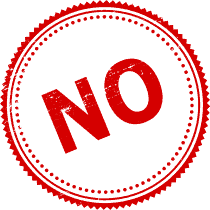
Indoor grilling must only be carried out on a grill designed explicitly for indoor grilling.
Anyway, why would you want to use your Weber Q inside? After all, that was never its intended purpose.
There is no comparison to indoor grilling when compared to grilling in the great outdoors. The flavours that outdoor grilling and roasting can produce are simply magical and out of this world.
Can you cook a roast in a Weber Baby Q?
Yes! Absolutely. The Baby Q is no different from the medium or family series aside from its size, and can still cook the most perfect pork, lamb or chicken roast.
The Baby Q isn’t just for having friends and family around for a Sunday barbecue. The Weber Q is an all-rounder.
It can BBQ, roast meat, veggies, and even bake a cake.
And the Weber Q Baby is no different. The Baby Q model does, however, have some small differences, such as:
- The Baby Q cannot produce as much heat when compared to the medium and family series.
- Its size is somewhat smaller, making it challenging to cook larger meals.
But it’s not all doom and gloom, the Weber Q baby does also have other benefits.
The size of the Baby Q makes it the perfect travel companion to take on holidays.
Imagine being able to cook bacon and eggs, bbq sausages and chops, or juicy roast pork with crispy crackling while camping. Even a Weber Q Potato Bake or chocolate mud cake.
The Baby Q is so versatile, think about taking half a dozen kitchen appliances in one while enjoying great food on your holidays.
If you are interested in getting started on your first roast in your new Weber Q, you can check out my roast pork, lamb, and chicken recipes below:
Ultimate Weber Q Roast Pork with Crackling
Juicy Weber Q Roast Lamb with Garlic and Rosemary
Tender Honey-Glazed Weber Q Roast Chicken
What is the roast setting on a Weber Q?
The gas control knob must be in the middle position when cooking on a Weber Q bbq.
This is the same position for the family (3100), medium (2000) and Baby Q (1000) series models.
But before roasting anything on a Weber Q, you should always remember to transform your BBQ into a convection oven. Otherwise, you can burn your meat and vegetables.
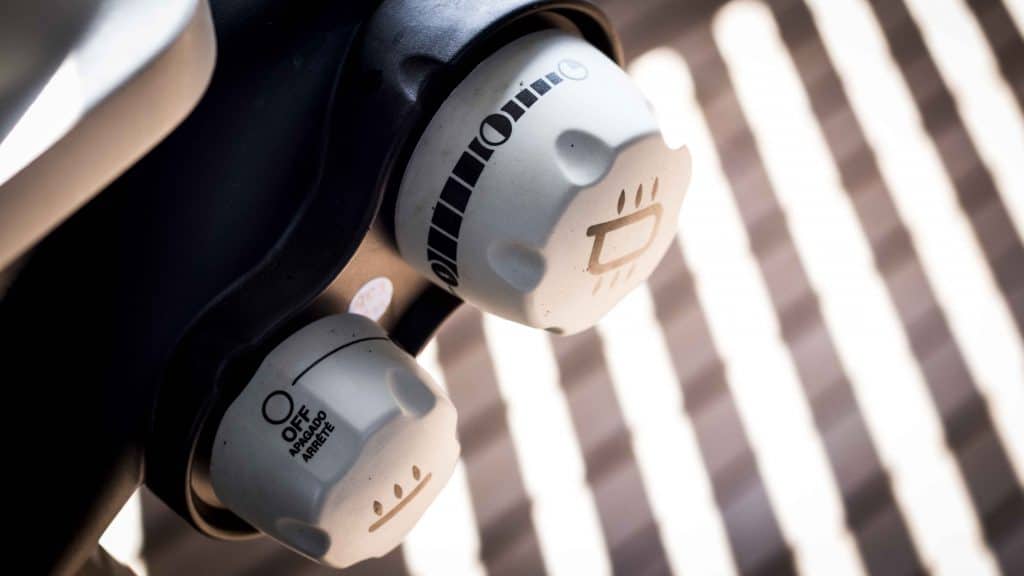
To do this, you need what is called a convection tray.
The convection tray is engineered with vents to allow heat to cook the meat. While allowing fat to drip through to a small fat tray at the bottom of the Weber Q.
To do this, you simply place the convection tray onto the grill, making sure to put it in the centre until the 4 grooves in each corner rest into the slots on the grill.
This prevents the convection tray from moving around and will keep your food perfectly centred. Allowing heat to circulate around the meat and vegetables.
When the convection tray has been placed on the grill, you need to place your trivet onto the tray.
A trivet is a must when roasting anything on a Weber Q bbq so that heat can circulate underneath the food, which prevents burning.
When the convection tray and trivet are in place, it is important to pre-heat your Weber Q with the burner control knob in the START/HI position for 10 minutes.
If you are using the Family Q series, there are two control knobs. When pre-heating, the large control knob will need to be in the START/HI position and the smaller control knob on LOW, to get the Weber hot.
We do this to sear the meat when it first goes into the Weber, locking in the juices contained within.
20-25 minutes is needed for this process when roasting. Once the meat has seared, you need to turn off the smaller control knob and position the large control knob to the medium position.
Due to the elements on the day, you may experience a sudden loss of temperature. To combat this, you simply turn the control knob to the high position raising the temp and lowering it accordingly to always keep the meat within cooking range.
The Baby Q and medium (2000) series are both similar, having only one control knob.
When pre-heating, turn the burner control knob to the HIGH position for 10-15 minutes, allowing extra time to get hot. Then turn the control knob to the Medium setting for roasting.
How long do you cook a roast in a Weber Q for?
The time it takes to cook a roast in a Weber Q is dependent on asking yourself some crucial questions such as:
- The environment your Weber Q is in. Is it cold, windy or raining? These elements will not help to keep your Weber at the temperature you need to roast meat which in turn will take longer to cook.
- The size and weight of the meat you are roasting. The larger the meat will determine how long it will take to cook.
- Is the cut of meat boneless or bone-in?
Boneless meat can sometimes cook faster than bone-in.
However, bone-in will provide a lot more flavour. Poultry, for example, will cook faster when compared to cooking with the bone-in, but you will sacrifice flavour.
Beef or pork will cook around the same time, whether the bone is left in or not. But on the other hand, a lamb will take longer if it’s bone-in.
Nevertheless, you should always have a meat thermometer when roasting meat on your Weber Q. Because no matter the cut of meat, you will always know when it’s cooked.
To sufficiently estimate how long it will take to cook meat or poultry for, you must first begin by taking a measurement. We do this before roasting because the meat will absorb meat from the outside to its core.
This method works for both boneless and bone-in cuts.
Grab yourself a ruler and lay the cut of meat onto a flat surface. What you want to do here is identify the thickest part of the meat from the outside edge.
Measure the total depth of the meat from the thickest part in millimetres. Now we need to calculate the results.
For every millimetre, you add one minute of cooking time. For example, if a pork roast was 110 millimetres thick, it would take about 110 minutes of cooking time.
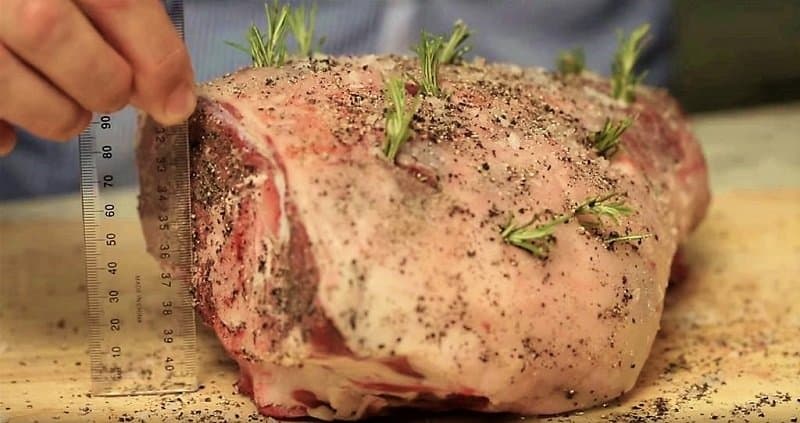
This is the best method if you don’t have a meat thermometer in your arsenal to help you determine the cooking time of your meat.
How do you know when a roast is cooked?
The rules change when cooking on a Weber Q bbq compared to a fan-forced oven.
When cooking in an oven, it is not uncommon to predict when a roast is ready by using the weight method. If a cut of meat is two and a half kilograms in weight than theoretically, it would take two and a half hours to be ready.
I have used this method myself before discovering Weber style cooking, and it has, for the most part, worked well for me.
Since cooking all of my roasts in my Weber Q, I have had to change how I do things.
Below is an easy to follow guide for beef, chicken, pork and lamb.
Meat that has been roasting on a Weber Q will need to be taken out slightly early.
This is because the internal temperature will continue to rise about 3 degrees while resting, bringing the meat up to safe eating temperature.
Please refer to the below temperature guide, to cook your meat at the desired doneness.
| MEAT TYPE | DONENESS | INTERNAL TEMP |
|---|---|---|
| BEEF | Rare | 52°C or 125°F |
| Medium Rare | 57°C or 135°F | |
| Medium | 63°C or 145°F | |
| Medium Well | 66°C or 150°F | |
| Well Done | 71°C or 160°F | |
| LAMB | Rare | 49°C or 120°F |
| Medium Rare | 54°C or 129°F | |
| Medium | 60°C or 140°F | |
| Medium Well | 66°C or 150°F | |
| Well Done | 68°C or 154°F | |
| PORK | Medium | 60°C or 140°F |
| Medium Well | 68°C or 154°F | |
| CHICKEN | 71°C or 159°F |
The internal temperature will continue to rise in chicken by 3 to 6 degrees bringing chicken up to a safe 74°C or 165°F for eating.
If you have a meat thermometer, try to keep that inside the meat, while resting for 15 minutes. This way, you can always keep a close eye when your meat has reached the desired temperature.
How do you BBQ on a Weber Q?
The difference between your regular bbq and a weber Q is the Weber Q is an all-round bbq and oven.
I love the fact I can cook eggs and bacon of a morning and a roast or bbq at night, all on my Weber Q.
To cook eggs, bacon, sausages, rissoles and chops that you don’t want to be burned, you need what is called a breakfast plate.
If you have the family Q, then you can remove one of the grill plates and rest the breakfast plate in its place. Otherwise, the Baby Q breakfast plate sits on top.
This allows you to bbq tomatoes, sausages, eggs, bacon on one side and steak on the other side.

To begin barbecuing on your Weber Q, turn the control knob to the START/HI position and close the lid to pre-heat for 10 minutes.
If using the Family Q, turn both control knobs to the START/HI position and pre-heat for the same length of time.
The lid must be closed during the pre-heating process.
I can’t express enough how important it is to get your Q hot, not only will it brand your steaks perfectly, doing so will lessen the chance of the meat sticking to the grill.
After 10 minutes open the lid and place the meat on the Q.
Sausages and chops have a high-fat content, so I recommend that you bbq them on the breakfast plate.
They can, however, be cooked on the grill, but make sure to turn your Weber Q down to the medium setting used for roasting.
Whatever it is you want to barbecue, remember to always pre-heat your Q and always cook with the lid down.
Can you smoke meat in a Weber Q?
Smoking meat on a Weber Q is a great way to add more flavour to an otherwise dull cut of meat.
To smoke meat, you can purchase smoker boxes. I only recommend genuine smoker boxes from Weber, as these have been designed specifically for the Weber Q series of BBQs.
Cuts of meat I recommend smoking for the most exquisite flavours are:
- Pork
- Steak
- Lamb Chops
- Pork Shoulder
- Pork Spare Ribs
- Pork Chops
- Chuck Roast
- Brisket
- Beef Ribs
- Chicken
- Turkey Breast
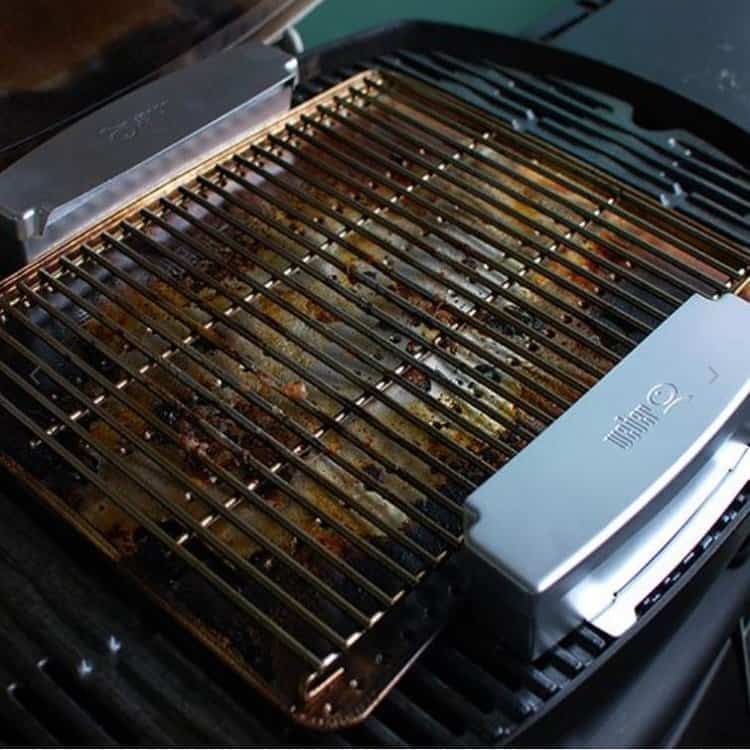
Of course, you are welcome to experiment with different meat to see what your taste buds enjoy the most.
To begin, fill up the smoker box with apple, or hickory hardwood chunks, depending on your preference, and put the lid on.
Place the smoker box onto the grill and turn to Weber Q’s gas control knob to the START/HI position and light.
Allow the smoker box to pre-heat with the Weber for about 10-15 minutes on the highest setting until you see a small amount of smoke coming out of the hole on the box.
The chips are now ready to go, and you are ready to place your meat onto the grill.
Leave the smoker box to do its thing for the entire cooking process.
Can you bake in a Weber Q?
You can definitely bake on a Weber Q bbq. It is a convection oven after all. However, it can be a lot more challenging as baking requires you to be more precise when it comes to temperature.
Baking cakes, cupcakes, muffins and pastries can all be cooked beautifully in your Weber Q.
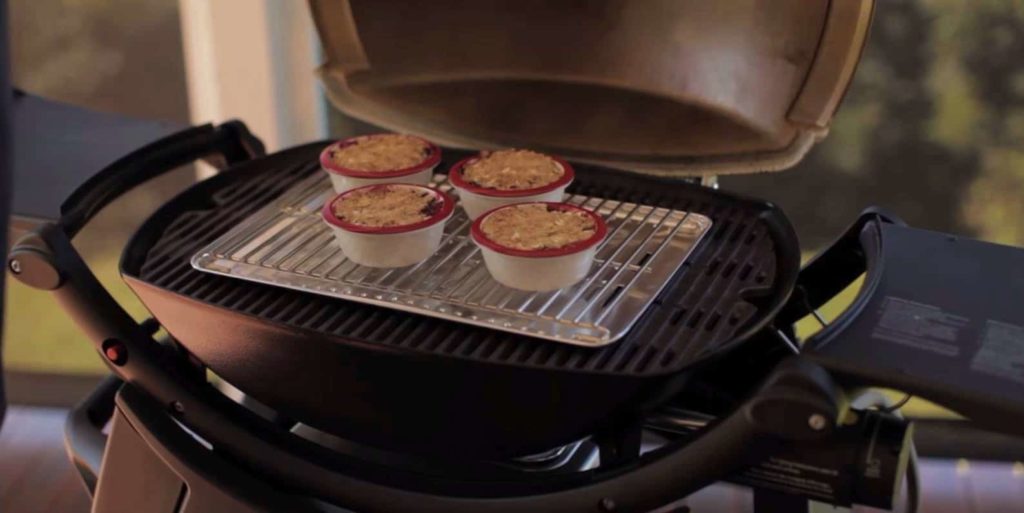
Before baking anything, your Q should always be clean from top to bottom. You don’t want previously cooked food on the grill to melt and absorb the smell into whatever you’re going to bake.
When baking, you must always use the indirect cooking method, by placing a convection tray and a trivet onto the grill, allowing heat to circulate around the food.
And the Q is designed to always cook with the lid closed.
To begin, pre-heat your Weber Q by turning the gas control knob to the Start/HI position and light. Allow your Q to get up to the temperature that your recipe recommends, then adjust the control knob to the medium setting to keep within that range.
Place your prepped baked item onto the trivet and close the lid, while continuously monitoring the temperature.
I can’t stress enough how vital pre-heating your Q is. If baked items are not placed into the Weber at the right temperature, then your cakes, muffins, etc. may not rise.
I don’t recommend baking anything inside your Weber Q unless you have an iGrill paired with an ambient probe to get a much more accurate temperature.
Weber has available a great range of baking products designed for the Weber Q.
Proper airflow around what you’re baking is a must, overturning something similar to the deluxe grilling basket on top of the trivet will provide plenty, giving even cooking.
You should always be cooking with the lid closed until cooked halfway. Opening the lid quickly and turning once to ensure all sides are cooked evenly.
Can you glaze meat in a Weber Q?
I know it can be tempting to glaze your meat for that extra kick to the flavour. Still, the Weber Q has been specially designed to lock in the natural juices within the meat, trapping all of that wonderful flavour.
But if you must add sauces or glaze to your meat then only use glazes with high sugar content, and only apply the glaze within the final 10-15 minutes of cooking.
If applied too early, the meat will be spoiled. This is because of the sugar content in the glaze, which will caramelise, turn black and burn.
What Weber Q Accessories Can I Buy?
Once you begin cooking on a Weber Q BBQ, it will be tough going back to traditional barbecuing because of the type of food the Weber Q can produce.
The Weber Q has endless possibilities when it comes to what it can cook. And with that comes the accessories Weber provides for us to cook them.
From chips, wedges, fish, rotisserie chicken, roast meat, veggies, and even a cake, I need accessories to make them all.
I am a self-confessed accessory junky as I accumulate more and more to explore the endless possibilities of meals I can cook for my family.
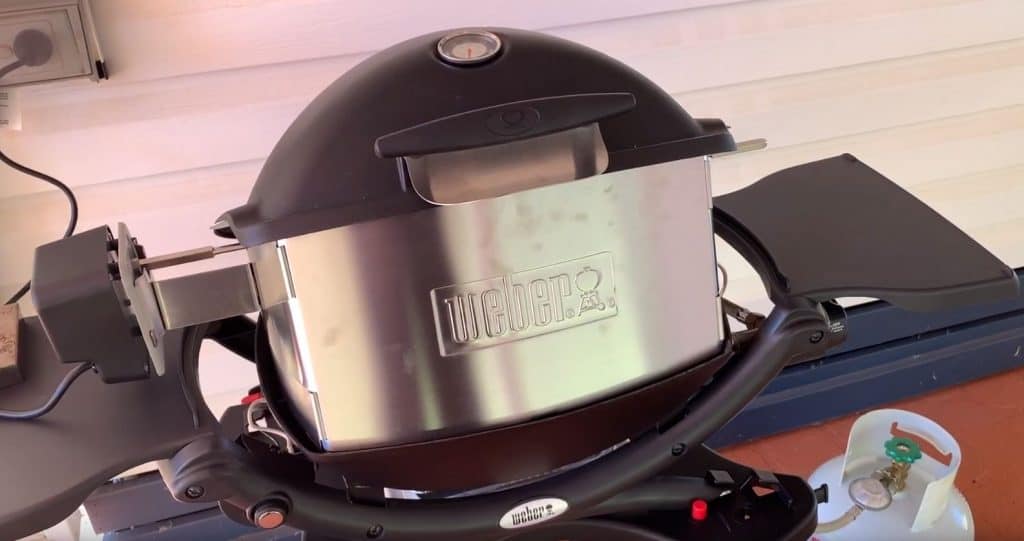
And of course like anything you buy that has accessories, Weber doesn’t really provide many extra’s straight out of the box.
Weber’s list of accessories is extensive:
- Electric Rotisseries
- Hotplates
- Meat probe
- Wok Set
- Pizza stone & serving trays
- Grilling racks
- Grilling baskets
- Smoker Boxes
- Rib Rack
- Tiered Grilling System
- Cooking grills
- Grill Pans
- Weber Q Covers & Stands
And that’s just some of them. Not even I have anything close to this list.
But you can rest assured if you are thinking about getting yourself a Weber Q BBQ, there are plenty of accessories for you. And nothing you cannot cook.
How do I use my Weber Q iGrill?
Above all my accessories I have to say my best friend is the iGrill. Because Weber has such a strict no lid opening policy, it’s tough to successfully cook without it.
The iGrill comes with 2 ambient probes, one for the Weber and the other to be inserted into the meat.
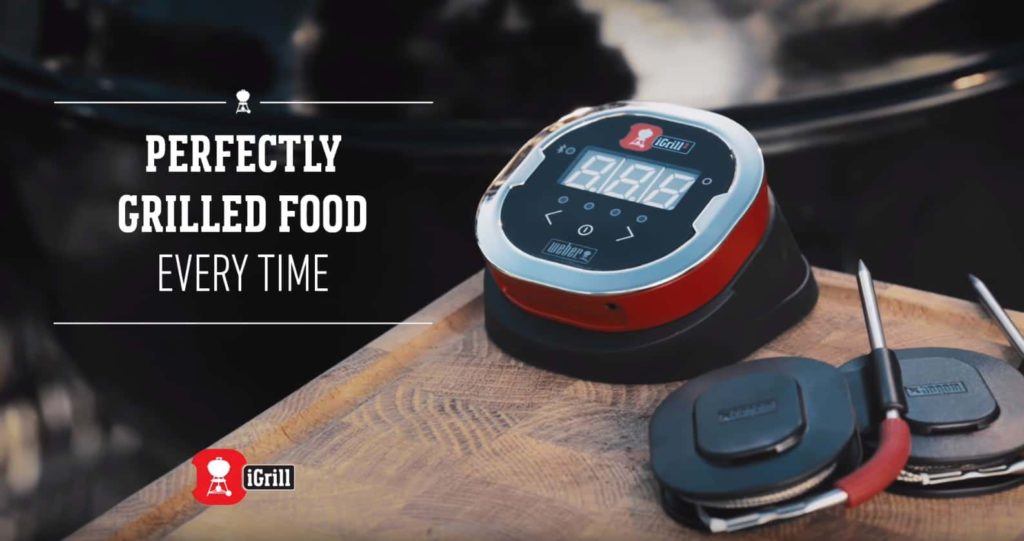
I can sit down anywhere within range away from my Weber Q and still check in on the temperature of my grill and my meat without even leaving my seat.
That’s pretty cool!
It is effortless to set up and begin using the iGrill, firstly, you need to:
- Download the app for your phone from either the GooglePlay Store or the Apple Store.
- Sign up for an account on your phone.
- Put the iGrill box next to your Q and connect the red and yellow ambient prob to the box.
- Turn on the iGrill and pair your phone via Bluetooth.
- Once paired, place the first probe onto a convection tray or grill, and the second probe is inserted in the centre of your meat.
- If roasting a whole chicken then you will want to place the ambient probe in the thickest part of the breast, without touching the bone. This is the same for any meat that has a bone. If the probe touches the bone, the iGrill will give a false reading.
- If all steps are followed correctly, when looking at the temperature tab on the app, you will see the correct temp readings for both the Weber and the meat.
By having the iGrill in your Weber Q accessory arsenal, you can take the worry out of continuously checking on your meat and lessening the temptation of lifting the lid.
Should I Buy a Weber Q?
I know it can be challenging to make the transition from the old fashioned Weber Kettle or Charcoal Griller to an LPG style of cooking.
I was always under the impression that cooking with LPG would dry out my meat.
Well, this couldn’t be further from the truth. I have personally found no difference in the quality of the flavour and natural juices that come from perfectly cooked meat.
What I do find better between the Weber and Weber Q is the convenience. It is so much easier just turning the gas and igniting the Weber.
Starting the head beads or charcoal with a gazillion firelighters in a chimney was always a tedious process, and not to mention time-consuming.
Just to wait nearly 30 minutes for all of the heat beads to be ashed over.
Then place them into the Weber and waiting a further 20 minutes for convection to begin.
I’ve definitely converted.
But for you, it really comes down to your time and your money. After all, there isn’t a lot of difference in the flavour.
A Weber kettle is cheaper than a Q. But it requires more work.
A Weber Q is fast and more convenient, but more expensive to buy, and can cook a great deal more varieties of food.
Before leaning towards a Weber Q, make sure to weigh up these differences to help make the right decision for you and your family.



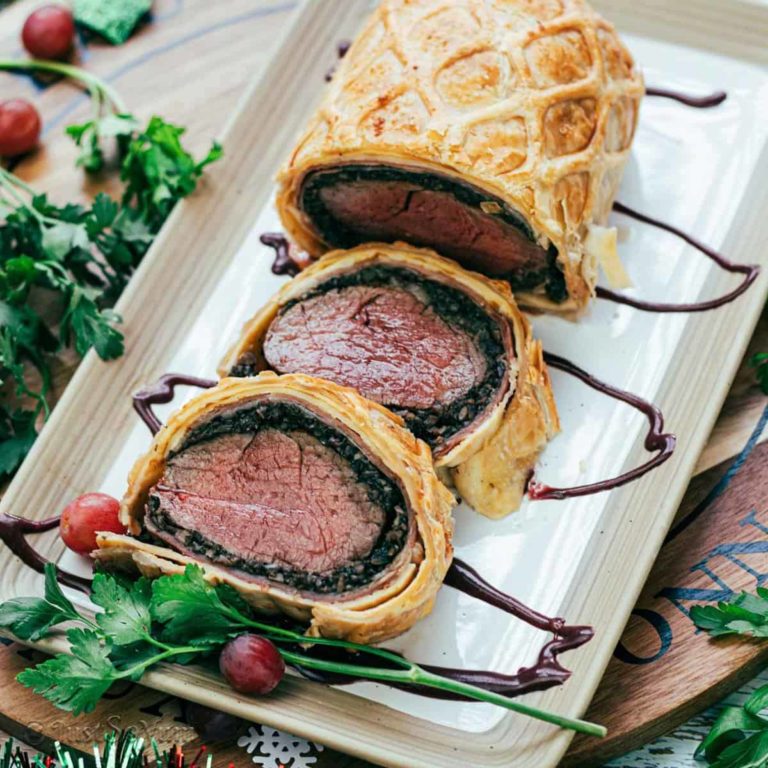
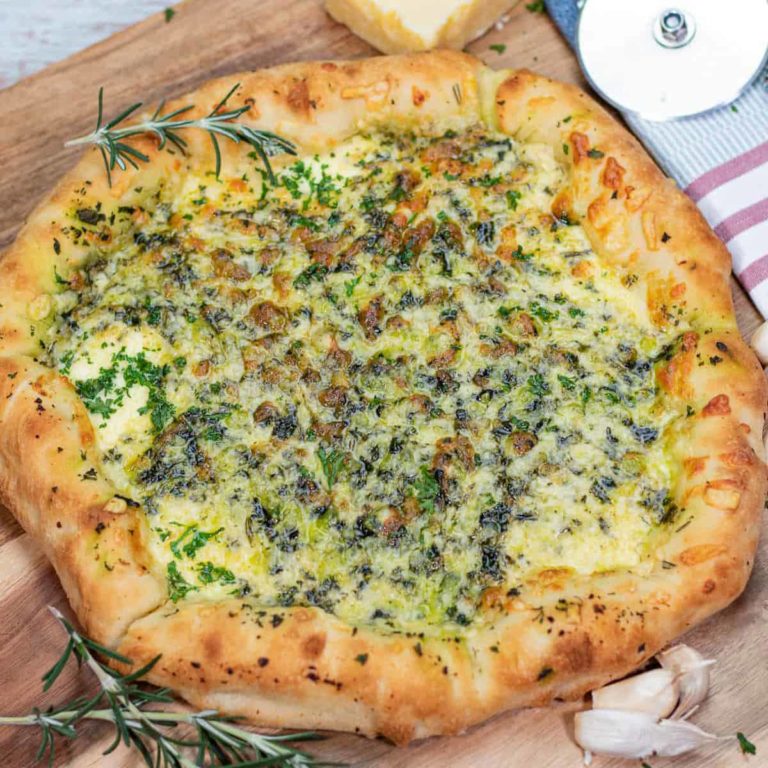
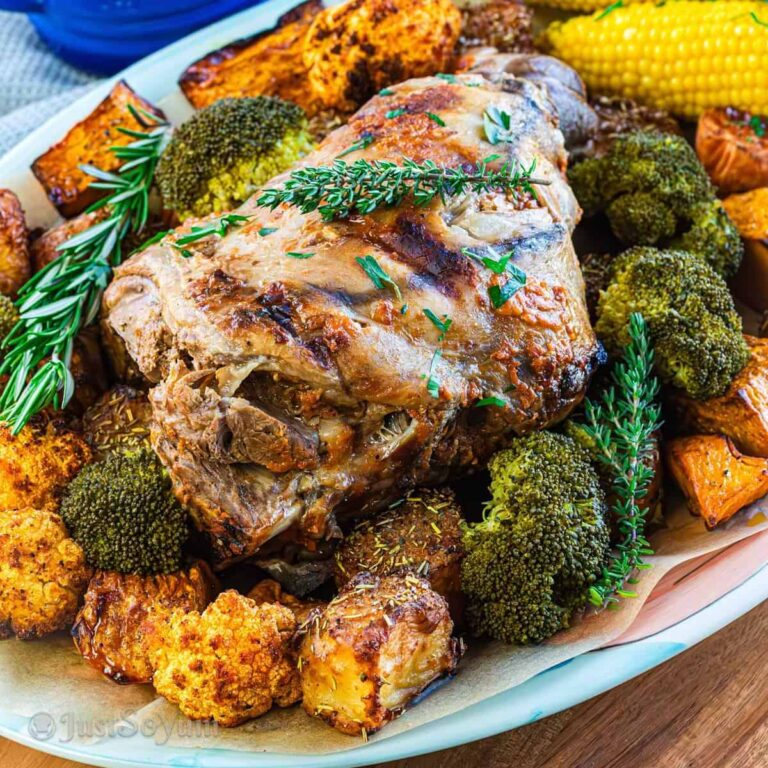
this post deserved to be shared…lots of gems!